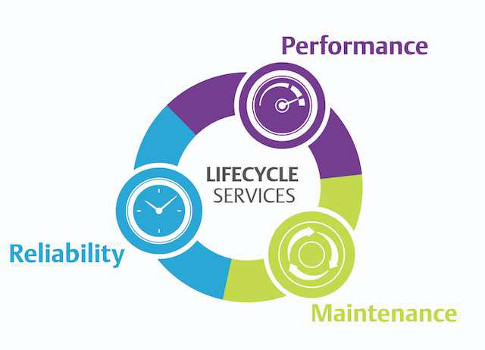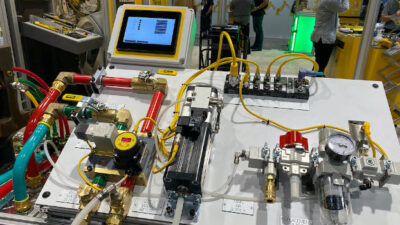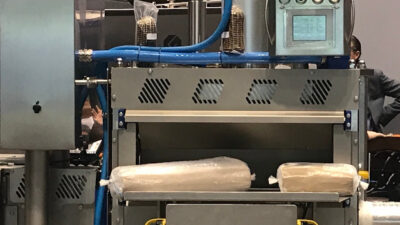For automation, return on investment (ROI) is more important than total cost of ownership (TCO). When making a capital investment in automation, companies need to determine value based on the solution’s impact on facility performance and its workforce. Also consider cost of downtime and services.

When it comes to making a capital investment in automation, many companies determine value by looking at the cost to install and operate a system over the course of its lifecycle. However, what isn’t considered, and what’s arguably even more important, is the solution’s impact on the overall facility’s performance and workforce.
Operators in the industrial process industry can use any number of metrics and methodologies to determine the viability of their capital investments. In recent years, however, in an effort to optimize overall cost, many have turned to total cost of ownership (TCO) as a means of driving purchasing decisions. While this has allowed stakeholders to quantify (albeit roughly) how much will be spent on an investment over the course of its lifecycle, applying TCO strictly on CAPEX and OPEX (capital expenditures and operating expenditures) fails to capture many of the benefits generated from improving the performance of an asset and/or process.
When it comes to choosing among automation solutions, using TCO as the sole metric for making a decision is contradictory because one of the primary purposes of implementing an integrated solution like a distributed control system (DCS) is to achieve measurable performance improvements in the forms of efficiency, production, safety, and compliance.
Ironically enough, by focusing only on cost when evaluating a capital investment in automation, operators may inadvertently end up doing the exact opposite of what they are trying to accomplish, which is to select the option that offers the most value given the operational life of the facility.
When looking at automation solutions, it is necessary to treat TCO as one piece of the equation used to calculate return on investment (ROI). And keep in mind, when talking about ROI, we are looking at the functional definition—not the accounting definition. In our equation, ROI is a function of combining TCO with the positive impacts that come from performance improvements (see Figure 1).
Understand TCO versus ROI
Generally speaking, TCO consists of two parts. The first is the cost to actually purchase and implement the solution (such as hardware, software, and networking). This is often referred to as total installed cost (TIC). In today’s environment, with capital expenditure budgets stretched thin, many operators have placed a particular emphasis on TIC. While it certainly should be considered when making a decision, doing so without taking into account lifecycle costs or operational impact is an approach that often results in missed opportunities.
The second part of TCO is the total cost to manage and maintain the solution throughout its lifecycle (including the cost of decommissioning), which typically ranges anywhere from 30 to 40 years. It is this part of TCO that often distinguishes one option or vendor from another. However, in many instances, it takes a backseat in pre-front-end engineering design evaluations to the cost of acquisition.
As its name indicates, TCO looks at the cost aspect of implementing an automation system, including the cost of doing business, opportunity costs, replacements, or upgrades. But it does not take into account performance improvements, and thus it fails to provide an accurate representation of a solution’s true value.
To obtain a more precise and realistic calculation, looking at the entire ROI equation is vital, which takes into consideration the total cost to install, operate, and maintain the system, plus the operational impact and monetary savings generated by performance improvements.
Where TCO falls short
Using TCO or TIC as the primary determinant when choosing an automation solution is not that different from purchasing a stock option without considering what kind of monetary returns it might generate. Although the stock may be cheap and present very little risk, buying it only on price is a strategy that is unlikely to benefit a portfolio.
While operators recognize that the cost associated with implementing new technology can only be justified if it provides a suitable return, many do an inadequate job of assessing what that return entails.
For example, the implementation of even the most rudimentary control optimization strategies may allow for more precise control over a process, leading to increased throughput by being able to operate closer to production limits (control optimization). Throughput gains might also come from shorter batch cycle times, lower grade transition time, less product re-blending, and decreases in scheduled shutdown duration and frequency. All of these improvements can easily be translated into monetary value and by including them in a TCO analysis, the concept of ROI is introduced.
What’s more difficult to calculate—and what many operators today applying only TCO—are the improvements that come from other benefits generated by the automation system, such as reduced unscheduled downtime, improved product quality, reduced variability, more effective maintenance, and increased operational visibility. These also can result in significant financial gains throughout the life of a facility, but they are often disregarded on account of the difficulty associated with assigning monetary value.
If you’re not leveraging performance improvements, you may be missing big opportunities—especially when the improvements have accumulated over the lifespan of the facility. The same can be said about operational improvement that comes as a result of facility personnel working more effectively, which is another notable benefit associated with the implementation of an automation solution that TCO fails to capture.
Careful design of displays, with the operator tasks and priorities in mind, allows personnel to make better and faster decisions. This has proved to be the most effective way to increase operator efficiency and produce best-in-class operations performance, which leads to reduced unplanned downtime, increased productivity, and improved safety.
A best-in-class automation solution also helps facilitate collaboration among engineers, operators, and maintenance personnel. This is particularly important during shift changes, which typically are the most risk-laden time of the day at a production facility. An electronic logbook is a very simple control platform feature that provides personnel coming into the plant with critical information about what happened during the previous shift. It also provides context for future work activity, which drives efficiency in personnel usage and speed to resolution of abnormal process conditions.
Improved safety and compliance
Eliminating health, safety, and environmental issues is at the top of every plant manager’s agenda. Improved automation often plays a key role in reducing these types of events. If a proposed investment will result in safer operations or reduced emissions, it should be included in the justification description.
Operators often fail to attach monetary significance to improvements in safety and/or environmental compliance, which undervalues the automation solution. This has become especially problematic in areas such as continuous carbon or other emissions, which will eventually incur financial penalties.
When calculating performance improvements in safety, companies should consider the cost associated with being noncompliant. When applicable, any losses should be considered that result from an event such as a spill, leak, or worker injury.
Consider the cost of downtime
Lost revenue from equipment downtime can have a substantial impact on the overall facility profitability. As a result, it should be included when calculating ROI. When estimating downtime, many operators look at hardware maintenance requirements to determine scheduled shutdown frequency and duration. What they don’t consider, however—and what’s arguably more important—are the losses that arise from unscheduled shutdowns.
Although difficult to predict, unplanned downtime due to equipment failure can typically be mitigated by implementing proactive strategies, such as asset health monitoring. For many operators, the cost associated with implementing instrumentation that provides the capability to perform this type of monitoring is reflected in TCO as a maintenance expense. But by accounting for benefits such as higher plant uptime and extended life of equipment—not to mention shorter equipment maintenance outages-the instrumentation is seen for what it truly is: a source of measurable and substantial savings.
Intermittent issues and underlying health warnings can be identified before an equipment shutdown and unplanned downtime occurs by having a system health monitoring service which provides continuous health scannings of integrated control systems. In addition, automated health monitoring eliminates manual health checks—maximizing plant maintenance resources.
The benefits of implementing a system health monitoring service were evident at a biopharma facility, which was faced with the challenge of increasing automation system reliability and production uptime while reducing infrastructure support costs. Almost immediately after installing system health monitoring devices, a number of potentially significant system issues were identified, including communication failures as a result of an unsecured primary switch fiber connection, low controller memory during production operations, and network time synchronization offsets. Through alert notifications, personnel at the facility can now take corrective action to address these conditions before a system outage occurs.
In addition to supporting the client’s centralized operations, the service provided the capability to economically monitor and manage plant automation systems without significant investment upfront in capital or staff resources.
The savings that result from improving the reliability and performance of a facility and/or process outweighs the costs of implementing the automation infrastructure itself-which means that evaluating such an investment strictly on a basis of TCO would be disadvantageous.
Overall, when calculating the cost of downtime, operators should consider revenue losses, the cost to return the process or piece of equipment to operation (labor, materials, etc.); indirect cost associated with regulatory compliance, insurance, and safety; and finally, the capital costs of carrying excess production capacity.
The cost to service an ROI investment
Applying TCO to process control also fails to capture many of the intangible benefits that arise from partnering with a company that has proven automation and process control expertise.
Since process infrastructure typically has a lifespan of 20 to 40 years, making continuous improvements and upgrades to modernize is inevitable. In the event of an upgrade, the knowledge and expertise of the automation partner will play a critical role in ensuring that value from the investment is maximized.
To revisit the stock option metaphor, engaging with the right process control expert can be compared to choosing a broker who proactively manages a portfolio. Just as the broker frequently watches for new and valuable options to reduce risk and improve a position as market conditions change, a trusted automation partner is continuously adjusting process inputs and evaluating emerging technologies to enhance the overall operation of an asset.
Companies that operate with a "run-to-failure" mindset end up spending even more because failing to maintain systems leads to unplanned downtime and shortens the lifespan of capital investments. Engaging with a strategic partner to implement a proactive approach is essential to controlling the timing and cost of modernization projects, but it’s something rarely considered by operators when implementing an integrated automation solution.
Leveraging the knowledge and expertise of the automation partner to make strategic engineering decisions early in the developmental phases of the project—and throughout the lifecycle of a facility—can generate benefits that are difficult to capture in TCO or TIC.
A recent upgrade project at a chemical manufacturing site in the Middle East is a great example of making these strategic decisions. Recognizing the risk of production loss due to system obsolesce, the operator of the site made the decision to upgrade to the latest version of its automation systems. This included the replacement of multiple servers, operating stations, software for controllers, and replacement of traditional switches with smart switches at three separate facilities.
In addition to dealing with a very aggressive timeline to complete the upgrade, the project presented a number of difficult labor and safety challenges. Working in collaboration, we worked with the customer to complete the upgrades without affecting plant performance and/or availability—working 24-hours a day, 7 days a week, to complete the project during a scheduled shutdown.
To ensure safety and production uptime at the facility, the upgrade took place in two phases scheduled two months apart. The cohesiveness of the project team proved critical to overall success, as managers, engineers, and technicians from the facility worked alongside automation provider subject matter experts to identify risks, develop contingencies, and address issues throughout the upgrade.
In the end, what began as a routine migration project with a 10-month schedule, morphed into a 10-week sprint that helped the operator maximize safety, minimize downtime, and achieve best-in-class performance from an automation infrastructure.
Maximize automation value
Unfortunately, there is a trend throughout the process control industry of operators placing a disproportionally large emphasis on the total cost to install, operate, and maintain industrial automation systems. As a result, there has been a higher occurrence of facilities implementing solutions that do not offer maximum value.
To ensure that the optimal solution is selected, companies should look beyond TCO and instead apply ROI by taking into account the benefits that come from partnering with a control systems expert to implement an integrated solution. This includes any improvements in safety, reduced unplanned downtime, increased production, and improved workforce effectiveness.
Considering the total installed cost of automation solutions and the lifecycle costs for a project-along with the operational impact that is derived and enabled by automation from the aforementioned improvements-will allow for a selection of options that more appropriately aligns with the specific requirements and performance objectives of a facility. Doing so will ultimately lead to more efficient use of capital budgets in today’s increasingly cost-conscious environment.
Sean Sims is the vice president of lifecycle services for process systems and solutions at Emerson. Edited by Emily Guenther, associate content manager, Control Engineering, CFE Media, [email protected].
MORE ADVICE
Key Concepts
- The benefits of calculating ROI
- Inefficiencies of only applying TOC
- Determining value through calculating ROI.
Consider this
Are there other metrics to account for when considering a facility’s performance objectives?



